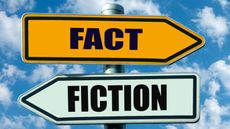Best Retirement Plans for the Self-Employed
A SEP and a solo 401(k) are two good options for freelancers and people who operate a sideline business.

What is the best way for people who are self-employed to save for retirement?
If you’re self-employed or have a sideline business, your best retirement-savings options are a Simplified Employee Pension (SEP) or a solo 401(k) plan. In both cases, your contributions are tax-deductible and grow tax-deferred until you withdraw the money in retirement
With a SEP, you can contribute up to 20% of your net self-employment income (which is your business income minus half of your self-employment tax) up to a maximum of $49,000 for 2011 ($50,000 for 2012). A solo 401(k) has the same maximum contribution limits as a SEP, but you can stash away more money at lower income levels because you fund a solo 401(k) as both an employer and an employee. So you can contribute up to 20% of your net self-employment income to a solo 401(k) plus up to $16,500 in employee salary deferral up to a maximum contribution of $49,000 for 2011. (In 2012, you can contribute up to $17,000 in employee salary deferral plus 20% of net self-employment income up to a maximum contribution of $50,000). And if you are 50 or older by the end of the year, you can make catch-up contributions to a solo 401(k) -- but not to a SEP -- of up to $5,500, for a maximum contribution of $54,500 for 2011 ($55,500 in 2012).

Sign up for Kiplinger’s Free E-Newsletters
Profit and prosper with the best of expert advice on investing, taxes, retirement, personal finance and more - straight to your e-mail.
Profit and prosper with the best of expert advice - straight to your e-mail.
If you operate a sideline business, you can probably shelter more money in a solo 401(k) than you can in a SEP. That’s because the employee portion of your contribution to a solo 401(k) is not based on a percentage of income. So if you earned $12,000 in net self-employment income in 2011, for example, you could contribute the entire amount to a solo 401(k) plan. With a SEP, by contrast, you would be limited to a $2,400 contribution -- 20% of your net self-employment income.
But you can’t double dip. If you have a 401(k) through an employer and have some freelance earnings on the side, then your total employee deferrals to your employer plan and your solo 401(k) can’t exceed the maximum limit for the year. . If you contributed $10,000 in 2011 to a regular 401(k) through your employer, for example, then the employee-deferral portion of your solo 401(k) contributions would be limited to $6,500, bringing your combined contribution up to the maximum employee salary deferral for 2011 of $16,500 ($17,000 for 2012). Note, however, that you could still contribute up to 20% of your net self-employment income to a solo 401(k) plan as long as your combined contribution did not exceed your total self-employment earnings for the year.
Although the solo 401(k) generally allows you to shelter more self-employment income than a SEP, a SEP is easier to set up. SEPs are available at most brokerage firms, mutual fund companies and banks. Fewer companies offer solo 401(k)s. You can get a list of solo 401(k) administrators and other information at 401khelpcenter.com. One of the most popular plans is Fidelity’s self-employed 401(k) plan, which charges no set-up or annual account fee and lets you invest in any Fidelity or non-Fidelity mutual fund, as well as stocks, bonds and other investments available to Fidelity’s brokerage customers.
If you’re interested in a solo 401(k), you need to act soon. The account must be opened by December 31 to qualify for 2011 contributions, even though you have until April 16, 2012, to make contributions for 2011. You have more time to set up a SEP. The deadline to open and fund a SEP for 2011 is April 16, 2012 (or October 15, 2012, if you file for an extension).
Get Kiplinger Today newsletter — free
Profit and prosper with the best of Kiplinger's advice on investing, taxes, retirement, personal finance and much more. Delivered daily. Enter your email in the box and click Sign Me Up.

As the "Ask Kim" columnist for Kiplinger's Personal Finance, Lankford receives hundreds of personal finance questions from readers every month. She is the author of Rescue Your Financial Life (McGraw-Hill, 2003), The Insurance Maze: How You Can Save Money on Insurance -- and Still Get the Coverage You Need (Kaplan, 2006), Kiplinger's Ask Kim for Money Smart Solutions (Kaplan, 2007) and The Kiplinger/BBB Personal Finance Guide for Military Families. She is frequently featured as a financial expert on television and radio, including NBC's Today Show, CNN, CNBC and National Public Radio.
-
 Retire in Mexico: Get a Lower Cost of Living Near the US
Retire in Mexico: Get a Lower Cost of Living Near the USMany older Americans retire in Mexico because of its laid-back lifestyle, beaches, and vibrant culture. Here’s the scoop on living in Mexico full-time.
By Brian O'Connell Published
-
 Financial Fact vs Fiction: This Roth Conversion Myth Could Cost You
Financial Fact vs Fiction: This Roth Conversion Myth Could Cost YouWhile some 'golden rules' stay in style forever, the financial landscape is constantly evolving. Here are five common myths to revisit (with more on the way).
By Scott McClatchey, CFP® Published
-
 Getting Out of an RMD Penalty
Getting Out of an RMD Penaltyretirement When your brokerage firm miscalculates your required minimum distributions, you have recourse.
By Kimberly Lankford Published
-
 Borrowers Get More Time to Repay 401(k) Loans
Borrowers Get More Time to Repay 401(k) Loansretirement If you leave your job while you have an outstanding 401(k) loan, Uncle Sam now gives you extra time to repay it -- thanks to the new tax law.
By Kimberly Lankford Published
-
 It’s Not Too Late to Boost Retirement Savings for 2018
It’s Not Too Late to Boost Retirement Savings for 2018retirement Some retirement accounts will accept contributions for 2018 up until the April tax deadline.
By Kimberly Lankford Published
-
 How to Correct a Mistake on Your RMDs from IRAs
How to Correct a Mistake on Your RMDs from IRAsretirement If you didn't take out the correct required minimum distribution because your brokerage firm made a mistake, the IRS may show some leniency.
By Kimberly Lankford Published
-
 Making the Most of a Health Savings Account Once You Turn Age 65
Making the Most of a Health Savings Account Once You Turn Age 65Making Your Money Last You’ll face a stiff penalty and taxes if you tap your health savings account for non-medical expenses before the age of 65. After that, the rules change.
By Kimberly Lankford Published
-
 Reporting Charitable IRA Distributions on Tax Returns Can Be Confusing
Reporting Charitable IRA Distributions on Tax Returns Can Be ConfusingIRAs Taxpayers need to be careful when reporting charitable gifts from their IRA on their tax returns, or they may end up overpaying Uncle Sam.
By Kimberly Lankford Published
-
 Make the Most of the New Military Retirement Plan
Make the Most of the New Military Retirement Planretirement The government is offering a new retirement option so that service members who leave the military before qualifying for a pension can still receive some benefits.
By Kimberly Lankford Published
-
 How Changes in Income Affect Medicare Premiums
How Changes in Income Affect Medicare PremiumsMedicare Medicare beneficiaries can see their premiums go up if their income rises, although for some that increase will be only temporary.
By Kimberly Lankford Published